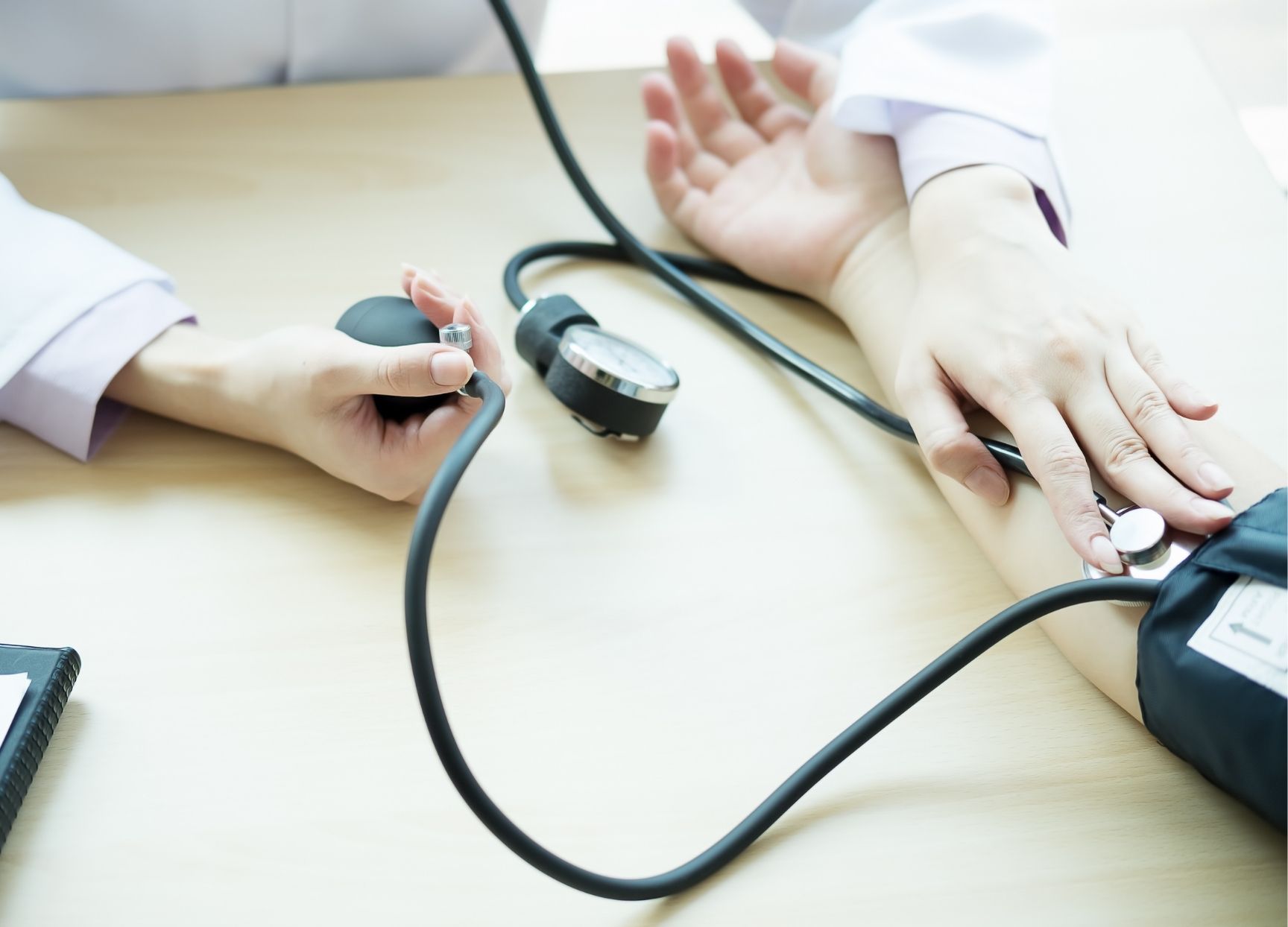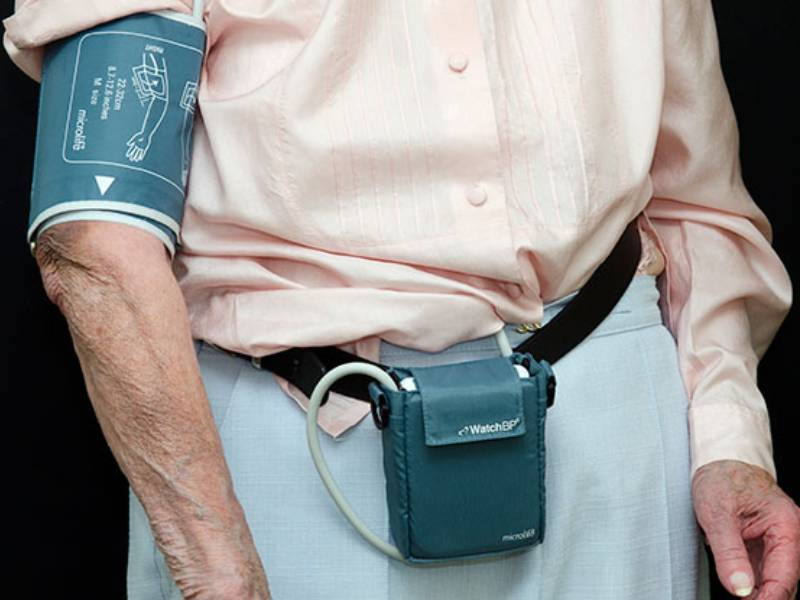The Benefits of the ABPM Examination for Accurate Blood Pressure Assessment
Ambulatory Blood Pressure Monitoring (ABPM) offers an innovative technique to assessing blood pressure. This technique provides continuous, 24-hour information, capturing changes that happen during everyday tasks and sleep. Such in-depth monitoring not just boosts precision yet additionally reveals crucial patterns, helping to differentiate in between real hypertension and conditions like white-coat disorder. Understanding these nuances could bring about extra effective therapy techniques. What effects might this have for client care and management?
What Is Ambulatory Blood Pressure Monitoring (ABPM)?
Ambulatory Blood Pressure Monitoring (ABPM) is an approach that allows for continuous blood pressure analysis over a 24-hour duration, providing a considerable photo of an individual's high blood pressure variations. ABPM test in Bangalore. This method makes use of a portable tool that automatically gauges high blood pressure at normal periods throughout the night and day. As individuals set about their day-to-day tasks, the gadget catches information showing their high blood pressure variations during various times and circumstances, consisting of sleep and physical exertion.ABPM is especially helpful for identifying problems such as high blood pressure, as it can differentiate between true hypertension and white-coat disorder, where individuals display elevated readings in professional settings however not in their day-to-day lives. By offering a comprehensive view of blood stress changes, ABPM aids health care carriers in making informed choices regarding diagnosis and treatment. In addition, it boosts the understanding of high blood pressure patterns, allowing tailored monitoring techniques for patients
Continuous Monitoring for Improved Accuracy
Continuous monitoring of blood stress with ABPM significantly improves the accuracy of readings compared to standard methods. This method permits blood stress measurements at routine periods throughout the night and day, recording changes that may occur as a result of daily activities, stress, or various other variables. Unlike single readings taken during a center check out, ABPM gives a comprehensive profile of a person's high blood pressure over a 24-hour period.This continual assessment results in much more dependable information, allowing doctor to identify patterns and possible concerns that may go unnoticed with sporadic dimensions. It likewise aids distinguish between real high blood pressure and white-coat disorder, where clients show raised analyses as a result of stress and anxiety in a clinical setup. By leveraging the benefits of continuous monitoring, ABPM greatly enhances diagnosis and treatment methods, eventually adding to better person results and more individualized health care methods.
Recognizing Blood Pressure Variability
Blood pressure variability describes the variations in blood pressure readings that can take place over time because of different variables, including exercise, stress and anxiety, and circadian rhythms. This irregularity is substantial as it offers understandings into an individual's cardio health. ABPM test in Bangalore. As an example, variables such as exercise can briefly enhance high blood pressure, while leisure may cause a decrease. In addition, the body's natural rhythms can cause high blood pressure to vary throughout the day, commonly being reduced during the night and higher throughout waking hours. High degrees of variability have been linked with raised risks of cardiovascular occasions, making it crucial for health care professionals to check these changes. Comprehending blood stress irregularity helps in customizing treatment strategies and assessing total wellness. Accurate evaluation through techniques like Ambulatory High blood pressure Monitoring (ABPM) can catch these variants, enabling a more detailed exam of a person's blood pressure account
Determining White Coat High Blood Pressure
White coat hypertension, usually described as white layer syndrome, is defined by raised high blood pressure analyses in medical setups due to stress and anxiety or stress and anxiety. Acknowledging its symptoms and indications is vital for precise diagnosis, as misconception can bring about unnecessary treatments. Understanding this phenomenon is vital for efficient blood pressure administration and client care.
Comprehending White Coat Disorder
Many people display elevated blood stress analyses in professional setups, this sensation, known as white coat high blood pressure, can obscure the real state of their cardiovascular wellness. This problem happens when individuals experience anxiousness or tension throughout medical visits, causing short-term spikes in high blood pressure. Consequently, doctor may misunderstand these readings as a measure of high blood pressure. White layer disorder highlights the value of exact blood pressure analysis, as counting solely on in-office dimensions can result in unnecessary therapies or mistaken beliefs concerning a patient's health. Comprehending this syndrome is necessary for medical professionals, as it emphasizes the requirement for alternative monitoring methods, such as ambulatory blood stress monitoring (ABPM), to obtain a much more accurate representation of an individual's high blood pressure levels.
Symptoms and Indicators
Many individuals may experience particular signs that recommend the existence of white coat hypertension. These signs and symptoms can consist of raised high blood pressure readings during clinical check outs, gone along with by sensations of anxiety or nervousness in a medical environment. Individuals frequently report a quick heartbeat or sweating when interacting with healthcare specialists, which might aggravate their blood pressure levels. Furthermore, some people may find more notice a difference between their in-office blood stress analyses and those taken in the house, where they feel much more kicked back. Recognizing these signs and symptoms is vital, as they can suggest that anxiety or stress and anxiety related to clinical settings is affecting their blood stress. Recognizing these signs can assist in determining white layer high blood pressure and establishing the necessity for more assessment.

Value of Accurate Diagnosis
Properly identifying white coat high blood pressure is important for reliable high blood pressure administration. This condition takes place when an individual shows raised blood pressure analyses in a scientific setting as a result of anxiousness or tension, while regular readings are recorded in a much more loosened up atmosphere. Misdiagnosis can bring about unnecessary treatment, exposing clients to prospective drug adverse effects with no actual health advantage. Using ambulatory high blood pressure monitoring (ABPM) is essential in identifying true hypertension from white layer syndrome. ABPM offers continual blood pressure measurements over 24-hour, enabling for a detailed evaluation that can help doctor make informed choices. Eventually, accurate recognition of white coat high blood pressure warranties clients receive appropriate care and prevents the pitfalls of mismanagement.
Analyzing Nighttime Blood Pressure Patterns
Reviewing nighttime high blood pressure patterns is essential for recognizing an individual's total cardiovascular health. Nighttime dimensions can expose significant variations in high blood pressure, which may indicate hypertension variability. Additionally, these patterns are very closely correlated with heart wellness, highlighting the importance of continuous monitoring beyond common office brows through.
Significance of Nighttime Measurements

Nighttime blood stress dimensions are commonly important for comprehending a person's overall cardio health and wellness. These readings supply crucial insights into how blood stress acts throughout rest, which can differ considerably from daytime levels. Monitoring nighttime blood pressure allows for the recognition of irregular patterns, such as non-dipping or reverse-dipping sensations, which may suggest an increased danger for cardiovascular occasions. Additionally, nighttime assessments can aid evaluate the efficiency of antihypertensive therapies, making certain that medicines are properly handled. By recording blood stress modifications throughout the night, medical care professionals can establish more personalized therapy plans, inevitably boosting patient outcomes and decreasing the possibility of lasting complications related to high blood pressure. This emphasizes the value of extensive blood pressure assessment throughout the night and day.
Identifying Hypertension Variability
Exactly how can the variability of nocturnal high blood pressure patterns inform high blood pressure administration? The evaluation of nocturnal blood stress with the Ambulatory Blood Pressure Monitoring (ABPM) test discloses important fluctuations that often go undetected in conventional dimensions. These patterns can show the visibility of "non-dipping" high blood pressure, where blood pressure falls short to go down throughout rest, recommending a boosted cardio danger. By identifying such variability, doctor can customize treatments extra properly, readjusting treatment strategies based on the client's particular nocturnal blood stress actions. Comprehending these patterns additionally help in assessing the efficiency of antihypertensive medications, making certain that patients attain perfect high blood pressure control throughout the night and day. Nighttime analysis becomes crucial in extensive hypertension administration.
Relationship With Heart Health
Comprehending nighttime high blood pressure patterns not only aids in hypertension management however additionally has considerable ramifications for heart health. Research shows that irregular nighttime blood pressure readings, such as non-dipping or reverse dipping patterns, are related to enhanced cardio dangers. Throughout rest, blood stress normally declines, a phenomenon crucial for cardiovascular recovery. When this decline is lacking, it might indicate underlying concerns such as free dysfunction or raised arterial rigidity. Additionally, people with elevated nighttime blood stress are at an increased danger for cardiovascular disease and stroke. Consequently, making use of ambulatory high blood pressure monitoring (ABPM) to analyze these nighttime patterns can offer important understandings, enabling tailored treatments that better protect heart health and wellness and improve total patient results.
Tailoring Therapy Plans Based on Real-Life Data
Tailoring treatment strategies based upon real-life information involves leveraging constant blood stress keeping an anonymous eye on to create personalized medical care approaches. The Ambulatory Blood Pressure Monitoring (ABPM) examination gives an extensive profile of a person's blood pressure variants throughout everyday activities. This comprehensive data allows doctor to determine patterns that may be forgotten in standard office visits.By examining variations in blood pressure throughout different times and problems, medical professionals can adjust drugs, dosages, and way of life suggestions to far better fit private client demands. This customized approach not only improves the performance of therapy plans yet also lowers the chance of damaging responses to medications.Furthermore, real-life information can reveal prospective triggers for hypertension, bring about proactive interventions. Generally, tailoring therapy based upon continual monitoring promotes a more efficient, patient-centered strategy to taking care of high blood pressure and improving why not find out more long-lasting wellness outcomes.
Enhanced Person Conformity and Interaction
While typical monitoring approaches may restrict client participation, using Ambulatory High blood pressure Monitoring (ABPM) greatly improves individual conformity and involvement in their very own healthcare. By allowing clients to use a portable gadget that videotapes high blood pressure over 24-hour, ABPM empowers people to take an active duty in their health monitoring. This constant monitoring supplies a much more thorough view of blood pressure changes, motivating people to comprehend their problem better.Moreover, ABPM fosters an atmosphere where clients can review their readings with doctor a lot more meaningfully, causing notified decision-making. Patients come to be extra bought adhering to recommended treatments and lifestyle adjustments when they see real-time data showing their health condition. The shift from passive individual to active partner not just enhances compliance but also boosts total health and wellness end results, making ABPM a useful tool in fostering client interaction in hypertension management.
Often Asked Concerns
How Lengthy Does an ABPM Examination Generally Last?
The ABPM test generally lasts 24 hr. Throughout this period, it determines high blood pressure at regular periods, supplying an extensive evaluation of a person's high blood pressure patterns throughout their daily activities and rest.
Are There Any Kind Of Threats Related To ABPM Testing?

Can ABPM Be Utilized for Kids and Teenagers?
ABPM can be used for kids and teenagers, supplying crucial insights into their blood pressure patterns. However, correct tools sizing and analysis by trained experts are important to assure exact analyses and avoid misdiagnosis.
Just How Is ABPM Different From Conventional Blood Pressure Monitoring?
ABPM differs from standard monitoring by supplying continuous blood stress readings over 24-hour, capturing variations during day-to-day tasks and sleep, whereas traditional techniques frequently count on solitary measurements, possibly missing out on important fluctuations in high blood pressure.
What Should People Do During the ABPM Test?
During the ABPM test, individuals must keep normal activities while staying clear of hefty exercise, too much high levels of caffeine, and smoking. They must likewise maintain their arm still when the device pumps up, guaranteeing accurate readings throughout the monitoring duration.